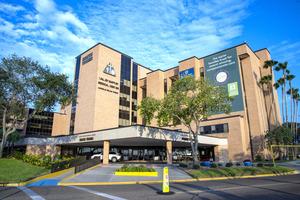Fernando del Valle
Staff Writer
HARLINGEN — Most of Rene Perez’s ambulance crew are ready to take the coronavirus vaccine this week as part of the first round of its historic rollout.
Since October, Perez, the South Texas Emergency Care Foundation’s transport director, has served as his crew’s model, taking part in the vaccine’s clinical trials.
“ I’m comfortable going forward,” said Perez, who’s received two vaccinations as part of Moderna Therapeutics’ trials. “I can tell my EMS counterparts they can take the vaccine. It’s kind of a sigh of relief.”
On Monday, the federal government launches its long-awaited distribution of the vaccine developed by Pfizer Inc., which boasts a 95-percent effectiveness rate.
“ We’re here finally,” Jennifer Bartnesky-Smith, Valley Baptist Medical Center’s chief strategy officer, said Friday. “There’s some light at the end of the tunnel. Folks should have some hope.”
In the Harlingen area, the hospital will serve as the distribution hub for the vaccine developed to safeguard against COVID-19, the novel virus that’s spurred the biggest pandemic in 100 years, contributing to about 300,000 deaths in the United States and about 3,300 in the Rio Grande Valley.
“ We have finalized our distribution plan and are ready to execute,” Bartnesky-Smith said. “As a hospital system here for 100 years, this is the first pandemic we’ve had of this magnitude. It’s truly a privilege to be planning logistics and distributing the vaccine.”
By Monday, the federal government is expected to have directly shipped about 3,000 doses to the hospital, which it will distribute in the area.
After Dec. 21, Moderna is expected to release its vaccine, which shows a 94.1 percent effectiveness rate, boosting the nation’s supply, Josh Ramirez, the city’s public health director, said.
“ A lot is subject to the amount of vaccine available,” Bartnesky-Smith said, referring to the vaccine’s distribution.
Distribution phases
As part of the national program, the vaccine will be distributed in phases throughout next year.
During the first two-month phase, state health officials plan to vaccinate health care workers including those treating COVID-19 patients in hospitals and nursing homes, Ramirez said.
“ The interest is to protect all people who work directly with COVID patients,” he said.
During next year’s second quarter which opens in April, officials are planning to begin vaccinating the general public, Bartnesky-Smith said.
High-risk groups include those 65 and older, nursing home residents and those with underlying medical conditions, according to a Dec. 7 copy of the state’s distribution plan.
Among higher-risk groups are Hispanics, the plan states.
“ High rates of diabetes and obesity make you more susceptible to the virus,” Ramirez said, referring to medical conditions making Hispanics a higher-risk group.
EMS crews targeted for vaccine
This week, those targeted for vaccination include emergency medical services crews.
“ We’re preparing for that as it becomes available to the staff and those willing to participate in vaccination,” said Perez, who expects health officials to offer his staff vaccinations during the middle or latter parts of the week.
“ We’re going to encourage vaccination,” he said. “We anticipate 60 to 70 percent of our staff is willing to take the vaccination. There are some folks that might not want to take it because of religious belief or medical conditions.”
Clinical trials
In October, Perez volunteered to take part in Moderna’s clinical trials at Centex Studies in McAllen.
“ I wanted to see how this vaccine was going to be,” he said. “It (COVID-19) was happening all around us. I was being exposed on a daily basis.”
After his first shot, he didn’t feel side effects, he said.
But following the second shot, he said, he felt mild “symptoms.”
“ You feel your energy down,” he said. “It’s that malaise — you feel like you’re coming down with a cold.”
But the vaccine is working, he said.
“ So far it’s been great,” Perez said. “I haven’t come down with any (COVID-19) symptoms.”
Considering vaccination
At City Hall, Ramirez is urging residents to consider being vaccinated.
“ The only way we can go back to a normal lifestyle is if we take the vaccine,” he said. “It’s going to improve our way of life.”
Meanwhile, Bartnesky-Smith is asking residents to review the Centers for Disease Control and Prevention’s research to decide whether they’ll be vaccinated.
“ We’re strongly encouraging folks to educate themselves and consider taking the vaccine,” she said. “Certainly, there are lots of folks with questions about the vaccine — this is breaking ground across the globe.”
Keeping up the guard
Even armed with the vaccine, Ramirez is urging residents to continue to take precautions such as wearing facial coverings, practicing social distancing, avoiding mass gatherings and frequently washing hands.
“ I don’t want people to think that because we’ve got this vaccine COVID is over,” he said. “We’re going to have some population that refuses the vaccination, so they will become spreaders. COVID is still going to be around and we’ve got to protect the population until we have most of the population vaccinated.”
Despite the vaccine’s high degree of effectiveness, the coronavirus is becoming part of life.
“ COVID is still going to be around,” Bartnesky-Smith said. “For the foreseeable future, we’re going to continue safety precautions.”




